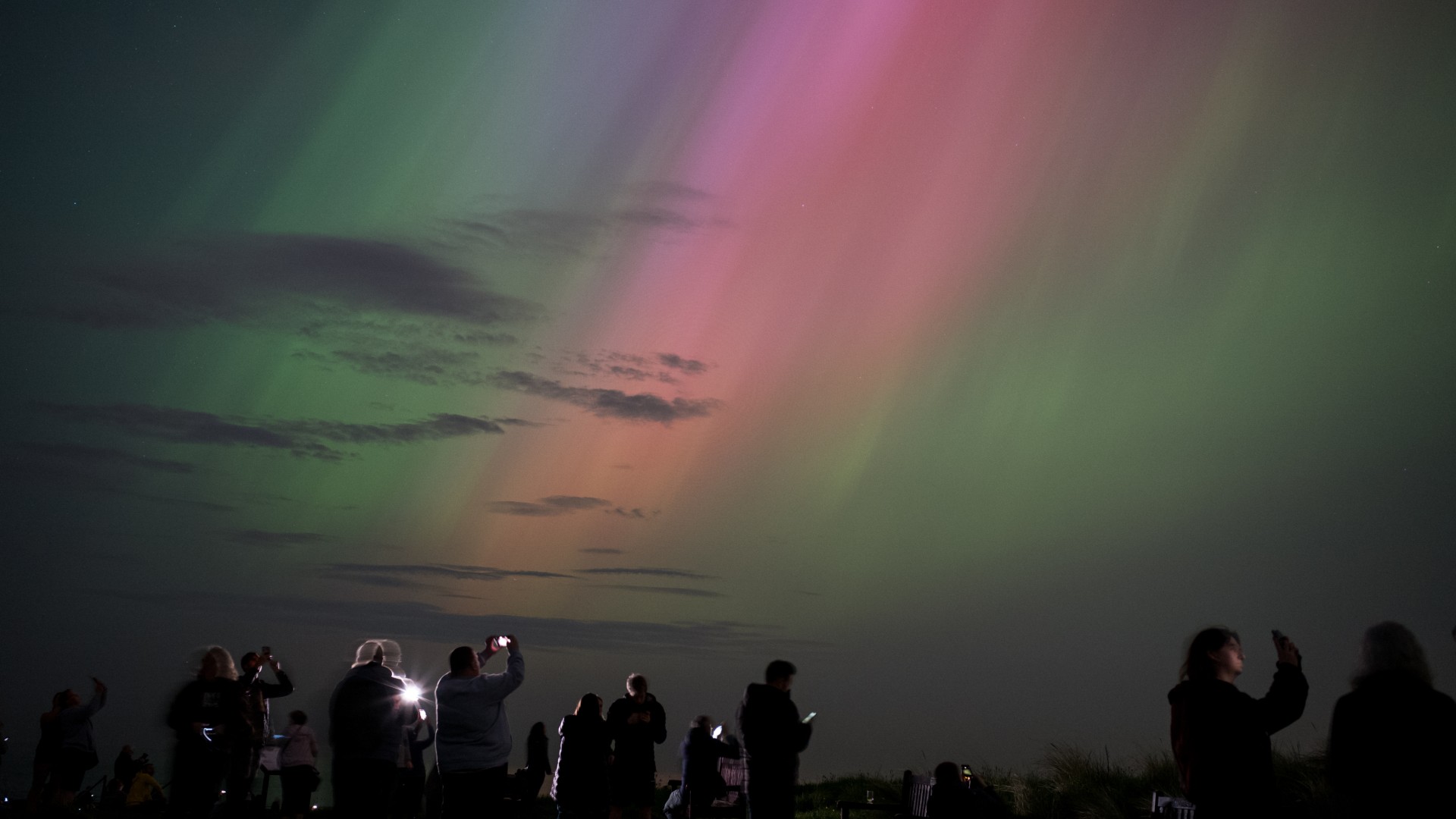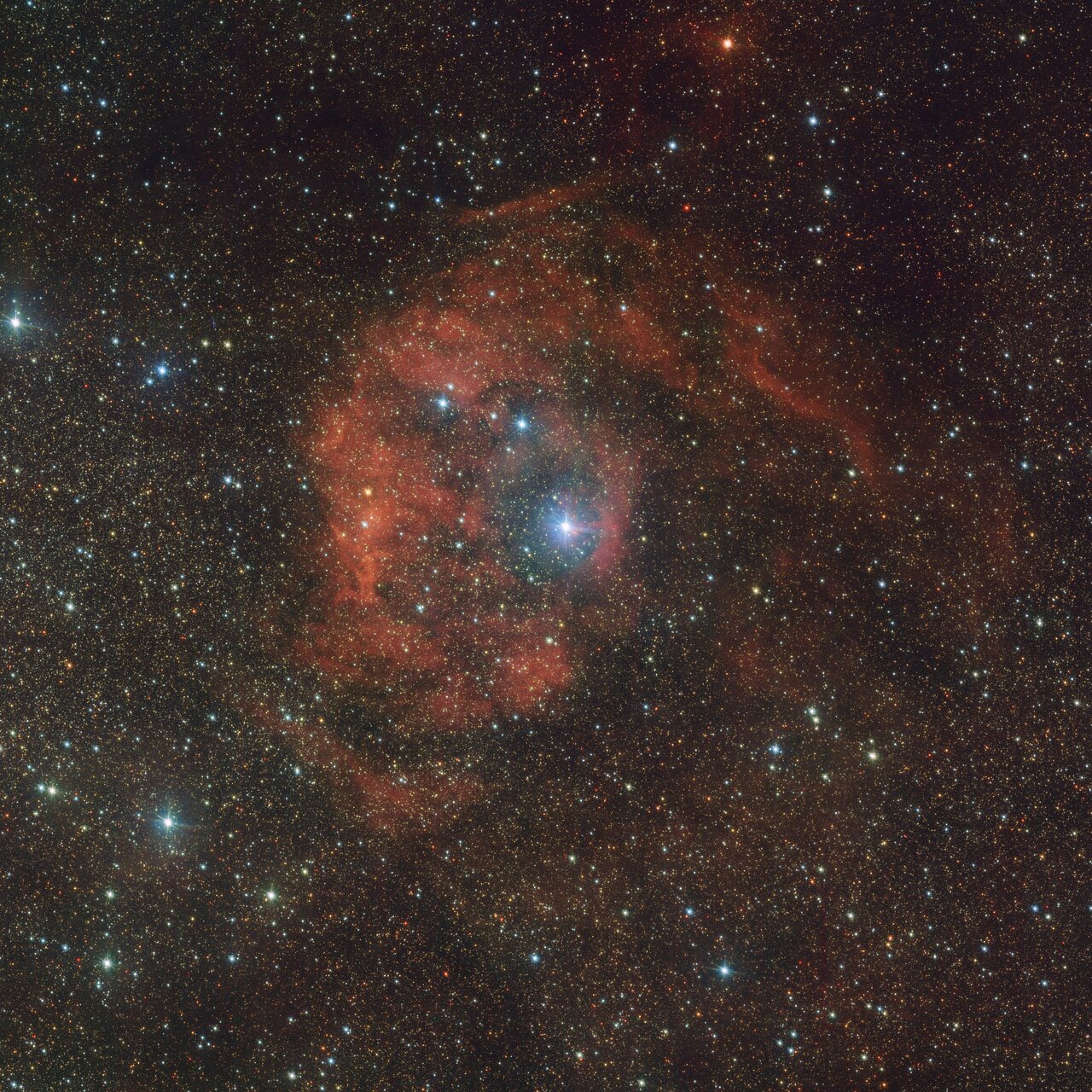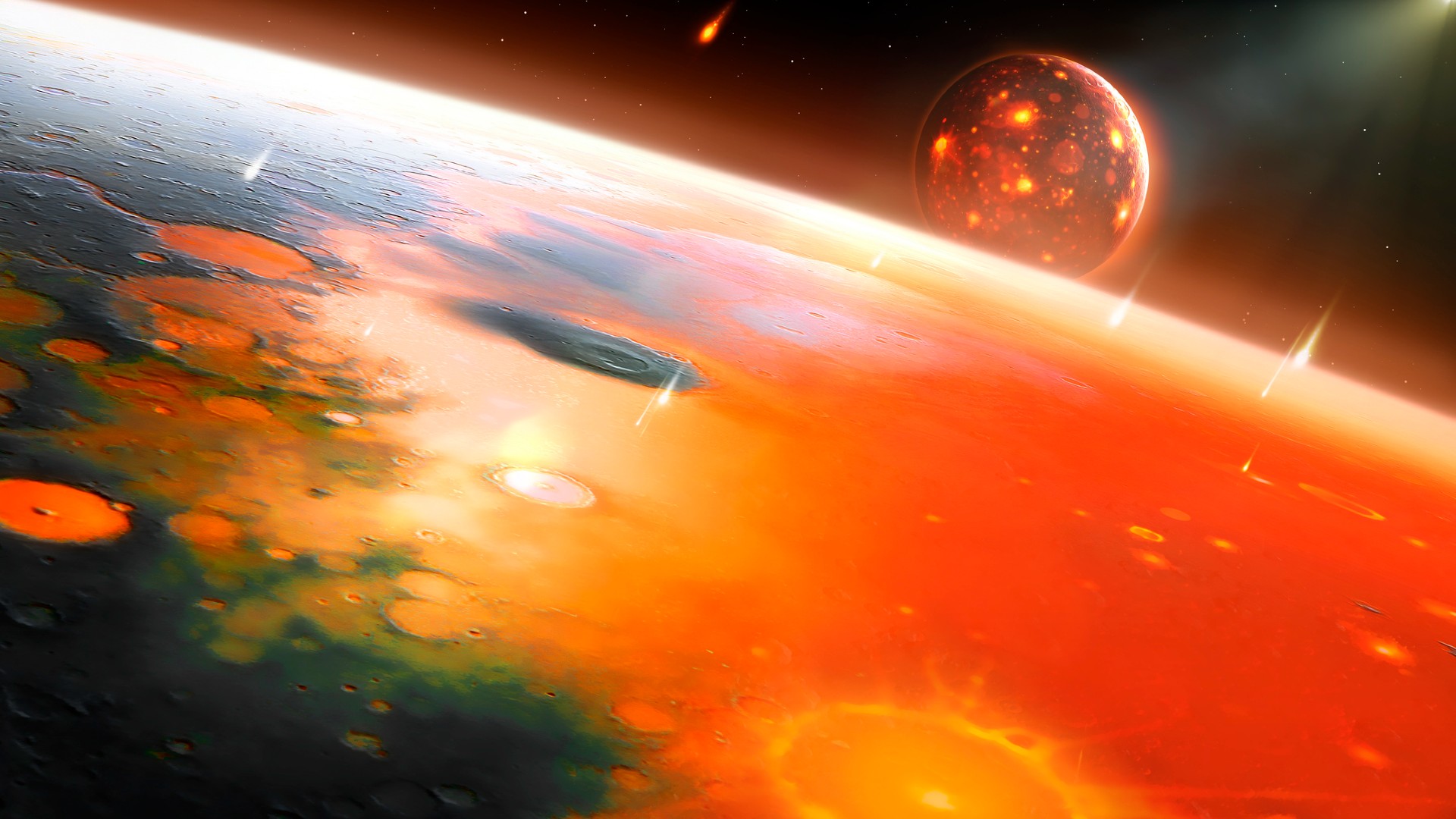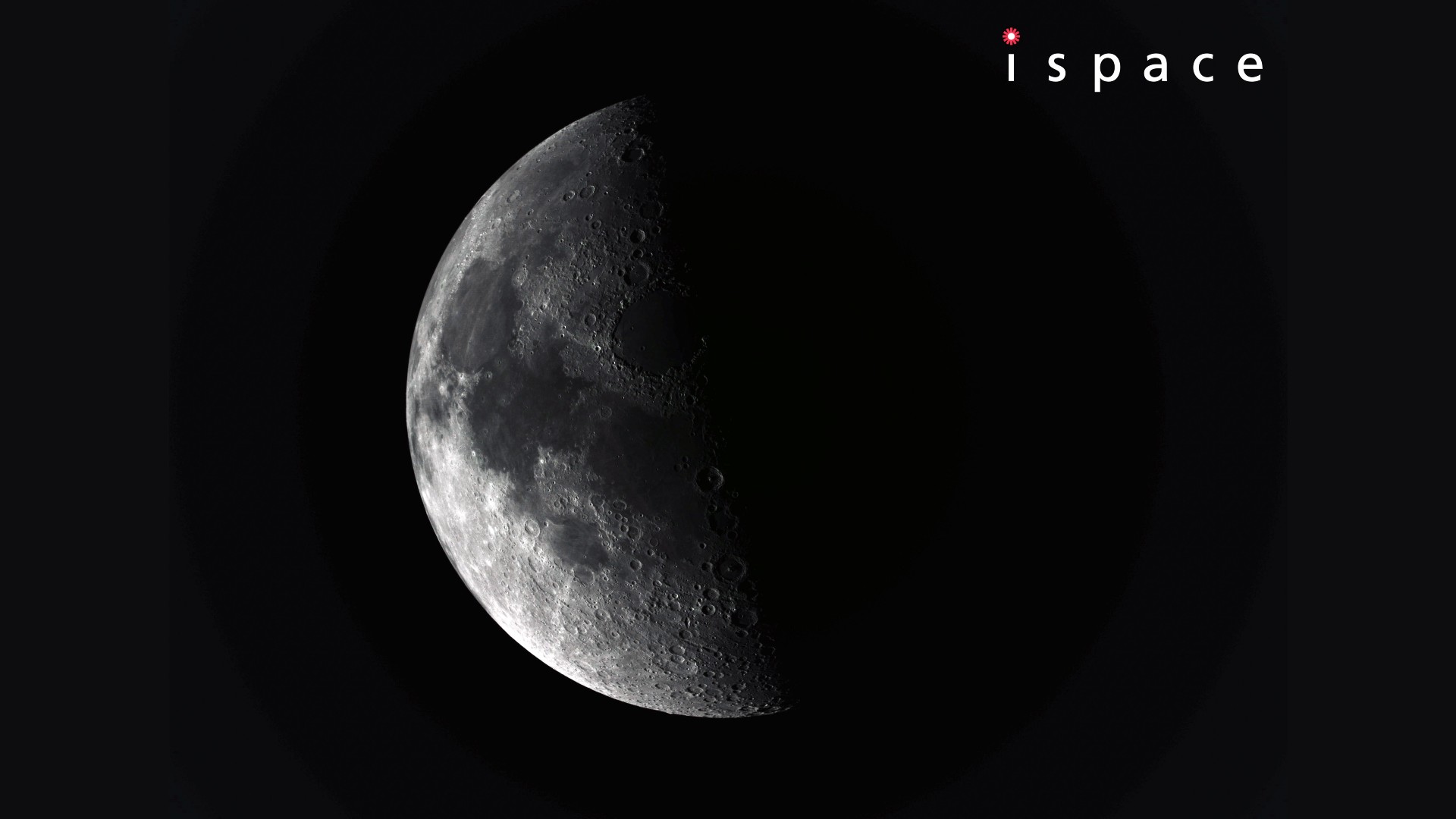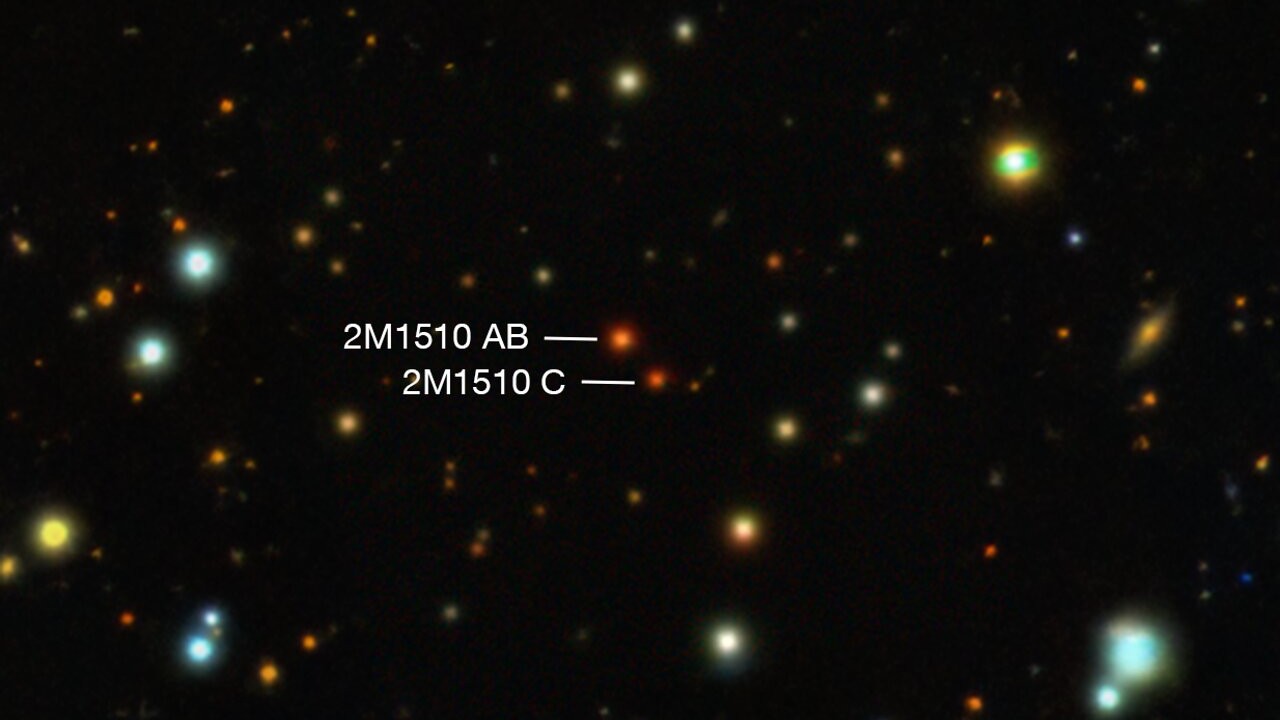I’ll never forget the night of May 10, 2024. I remember having dinner with a friend and talking about the potential of seeing the northern lights in Northeast Ohio, a conversation that I had never had before or even thought was possible. It sounded unlikely, but earlier that week, the possibility was brought to my attention when I wrote one of my first-ever stories highlighting space weather triggered by the sun. As a meteorologist, space weather wasn’t something I talked about often, but the more I was learning that week,…
Read MoreTag: Astronomy
Cosmic imposter bathes distant nebula in fiery red glow: ‘This star should not be here’
A dazzling new image from the European Southern Observatory’s VLT Survey Telescope in Chile has revealed an unusual cosmic tale unfolding 6,000 light-years away in the Serpens constellation. The snapshot features the vivid red nebula Sh2-46 — also known as Gum 80 — lit up in a fiery hue due to intense radiation coming from a brilliant blue-white star nestled at its heart. The stellar behemoth is among the rarest and most luminous stars in the universe, wielding significant influence over its surroundings. Despite its dominant presence, astronomers believe this…
Read MoreOur moon may have once been as hellish as Jupiter’s super volcanic moon Io
The moon spent a few million years as a volcanic wasteland, covered with ongoing eruptions that spewed from mountains and even from the ground itself. New research suggests that the moon’s orbit could have turned it into a molten monster for a few tens of millions of years. The result may have been comparable to Jupiter’s moon Io, the most volcanic body in the solar system. Early in the history of the solar system, a massive protoplanet plowed into a young Earth. The colliding material intermixed, then reformed into two…
Read MoreJapan’s Resilience moon lander arrives in lunar orbit ahead of historic touchdown try
A private Japanese lunar lander is now in orbit around the moon. The Resilience spacecraft, which was built by the Tokyo-based company ispace, arrived at the moon on schedule Tuesday (May 6), keeping it on target for a historic touchdown try a month from now. “First and foremost, we are extremely pleased that the Resilience lander successfully reached lunar orbit as planned today,” Takeshi Hakamada, ispace’s founder and CEO, said in a statement. “We will continue to proceed with careful operations and thorough preparations to ensure the success of the…
Read MoreWhere does the universe’s gold come from? Giant flares from extreme magnetic stars offer a clue
Scientists have finally gathered direct proof of how the universe forges its heaviest elements, a process that has remained a mystery for over half a century. A team from the Flatiron Institute in New York City calculated that giant flares emitted by magnetars — highly magnetic types of collapsed stars known as neutron stars — could be the long-sought cosmic forge that creates the universe’s heavy elements. Just one of these giant flares could produce a planet’s worth of gold, platinum, and uranium. “It’s pretty incredible to think that some…
Read MoreWhat time is it on the moon? US House space committee wants a standard lunar clock
We are one step closer to getting a lunar time zone this week, as a bill passed out of the US House Science, Space and Technology committee directs the administrator of NASA to develop a way to coordinate and measure time on the moon. The bill is titled The Celestial Time Standardization Act (or HR 2313), and was passed out of committee by a voice vote on Tuesday (April 29). It now goes to the full House for a future floor vote. If it passes the House (and then the…
Read MoreWhat would it be like living on Tatooine from ‘Star Wars’? This exoplanet orbiting twin suns could tell us
A Tatooine-like world with a key difference from the desert planet in “Star Wars” has been serendipitously discovered orbiting not two stars, but a pair of brown dwarfs. What’s more, this wacky planet doesn’t orbit around the brown dwarfs’ equator, but instead up and down over their poles. In the “Star Wars” universe, Luke Skywalker famously came from the planet of Tatooine, which had two suns and double sunsets. Tatooine is in a circumbinary orbit, which means that it doesn’t orbit one star, but instead orbits both stars of a…
Read MoreA whole ‘population’ of minimoons may be lurking near Earth, researchers say
Earth’s minimoon may be a chip off the old block: New research suggests that 2024 PT5 — a small, rocky body dubbed a “minimoon” during its discovery last year — may have been blown off the moon during a giant impact long ago, making it the second known sample traveling near Earth’s orbit. The discovery hints at a hidden population of lunar fragments traveling near Earth. “If there were only one object, that would be interesting but an outlier,” Teddy Kareta, a planetary scientist at Lowell Observatory in Arizona, said…
Read MoreJames Webb Space Telescope finds coldest exoplanet ever seen, and it orbits a dead star
Astronomers using the James Webb Space Telescope (JWST) have detected the first planet seen orbiting a dead star, offering new insights into how planets evolve during the final stages of a star’s life. The James Webb Space Telescope‘s observations of the exoplanet, named WD 1856+534 b, also confirm it is the coldest exoplanet to date, which could pave the way for the first detailed atmospheric studies of gas giant exoplanets and help us contextualize our solar system on a cosmic scale. “We were all a bit surprised — and excited…
Read MoreAstronomy Activation Ambassadors: A New Era
Learn Home Astronomy Activation… STEM Engagement at NASA Overview Learning Resources Science Activation Teams SME Map Opportunities More Science Activation Stories Citizen Science 3 min read Astronomy Activation Ambassadors: A New Era The NASA Science Activation Program’s Astronomy Activation Ambassadors (AAA) project aims to measurably enhance student Science, Technology, Engineering, and Mathematics (STEM) engagement via middle school, high school, and community college science teacher professional development. In 2024, AAA transitioned its focus to the development of an Astronomy Academy with varying levels of extent and intensity available to more…
Read More